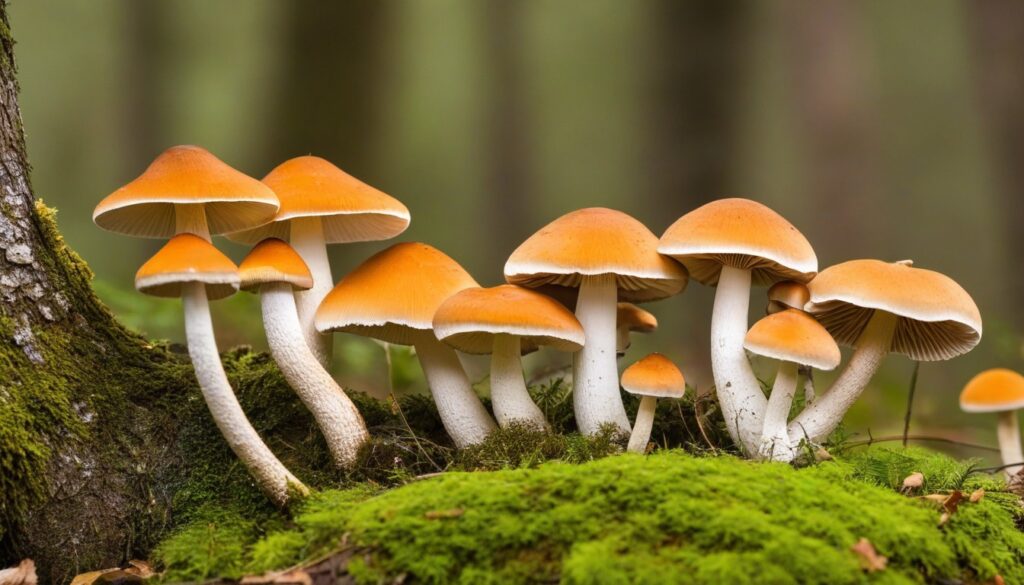Alaska’s wilderness is a paradise for foragers seeking fresh, wild produce. With its unique environment, diverse terrain, and vast stretches of unspoiled landscapes, Alaska offers some of the richest and most varied mushroom picking opportunities in the world. The state is home to a wide range of edible mushrooms, including many coveted varieties not found anywhere else.
Exploring the abundance of edible mushrooms in Alaska is an adventure that promises to take foragers through breathtaking natural settings and provide them with fresh, flavorful ingredients that they can turn into a multitude of dishes.
Key Takeaways
- Alaska’s wilderness offers a diverse range of edible mushrooms
- The Alaskan environment plays a significant role in mushroom abundance and diversity
- Correctly identifying edible mushroom varieties is essential to safe foraging
- Foragers should follow sustainability practices to preserve the ecosystem
- Regional mushroom varieties and Indigenous uses are unique to Alaska
The Rich Mushroom Diversity in Alaska’s Wilderness
The Alaskan wilderness is home to a diverse array of edible mushrooms, thanks to its unique environment. The moist coastal rainforests and the boreal forest regions provide an ideal habitat for many species, while the tundra offers another ecosystem for mushroom growth. The diverse landscapes and the abundance of various tree species serve as a foundation for the remarkable mushroom diversity in Alaska.
Mushrooms found in Alaska include the delicious morels, chanterelles, and porcini, as well as lesser-known varieties such as the pine spikes and velvet foot. The state is famous for its abundance of boletes, including the highly prized king bolete, or porcini mushroom.
These mushrooms vary in appearance, taste, and texture, and can be found throughout Alaska’s wilderness. The different species each have their preferred habitat, such as the morel’s affinity for recently burnt areas or the chanterelle’s preference for moist, shady conditions.
Foraging for mushrooms in Alaska provides an opportunity to explore the state’s rich diversity, while also offering a chance to savor unique and delicious flavors. However, it’s important to take precautionary measures and consult reliable sources before consuming any wild mushrooms, ensuring a safe and enjoyable foraging experience.
Safety Precautions and Mushroom Identification
Foraging for mushrooms in Alaska can be a rewarding and enjoyable activity, but also a potentially hazardous one. Therefore, it is essential to follow basic safety precautions before setting out on your expedition.
Firstly, it is crucial to carry a detailed guide for identifying edible mushrooms correctly. You must also learn to differentiate toxic varieties from edible ones, as sometimes dangerous and harmless species look alike. To avoid confusion, consider enrolling in a foraging class to get hands-on experience and expert guidance.
Another critical safety procedure is to inform someone of your intended route and expected return time. In case of unexpected emergencies, this information helps rescue teams locate you. Take the necessary supplies, such as a compass, flashlight, whistle, and first aid kit on your trip, regardless of how short your intended excursion may be. Keeping hydrated and nourished is also essential for your physical wellbeing.
Remember, when in doubt, throw it out. No mushroom is worth risking your health or safety over.
Protecting the Environment While Foraging
As foraging for mushrooms becomes increasingly popular in Alaska, it’s vital to observe sustainable foraging practices to preserve the Earth’s natural balance. A few tips to accomplish this include:
- Taking only what you’ll use and never over-harvesting or damaging the mushroom patch
- Avoiding novice spots and protected national parks that prohibit foraging of any kind
- Leaving unripe mushrooms to mature and disperse spores for future generations
- Never disturbing wildlife habitats or notorious bear habitats
Dangers of Poisonous Mushrooms
Despite taking all the necessary precautions, being confident in your abilities to identify mushrooms is essential in Alaska’s wilderness, where some poisonous mushrooms are indistinguishable from edible ones. Among the most toxic is the Amanita phalloides, commonly referred to as the death cap mushroom. An ingestion amount of just half a mushroom can potentially cause fatal liver damage.
|
Mushroom Name |
Symptoms |
|---|---|
|
Amanita phalloides |
Stomachache, diarrhea, and vomiting (6-12 hours after ingestion). These symptoms fade but reappear; eventually, the liver is severely damaged. Death can occur after 1-2 days. |
|
Amanita muscaria |
Vomiting, headache, diarrhea, cramps, confusion, disorientation, hallucinations, drowsiness, and seizures (duration varies) |
|
Galerina marginata |
Flu-like symptoms (6-48 hours after ingestion), including vomiting, abdominal pain, diarrhea, sweating, dizziness, visual disturbances, and fatigue. |
|
Clitocybe dealbata |
Stomachache, vomiting, diarrhea, high blood pressure, sweating, headaches, chills, and blurred vision (6-24 hours after ingestion) |
|
Gyromitra esculenta |
Dizziness, headache, nausea, vomiting, abdominal pain, liver damage, and in severe cases, coma and death (4-12 hours after ingestion) |
Bear in mind that this is not a comprehensive list of all poisonous mushrooms found in Alaska. Finally, if you experience any symptoms after eating mushrooms, seek medical attention immediately.
Top Edible Mushrooms in Alaska
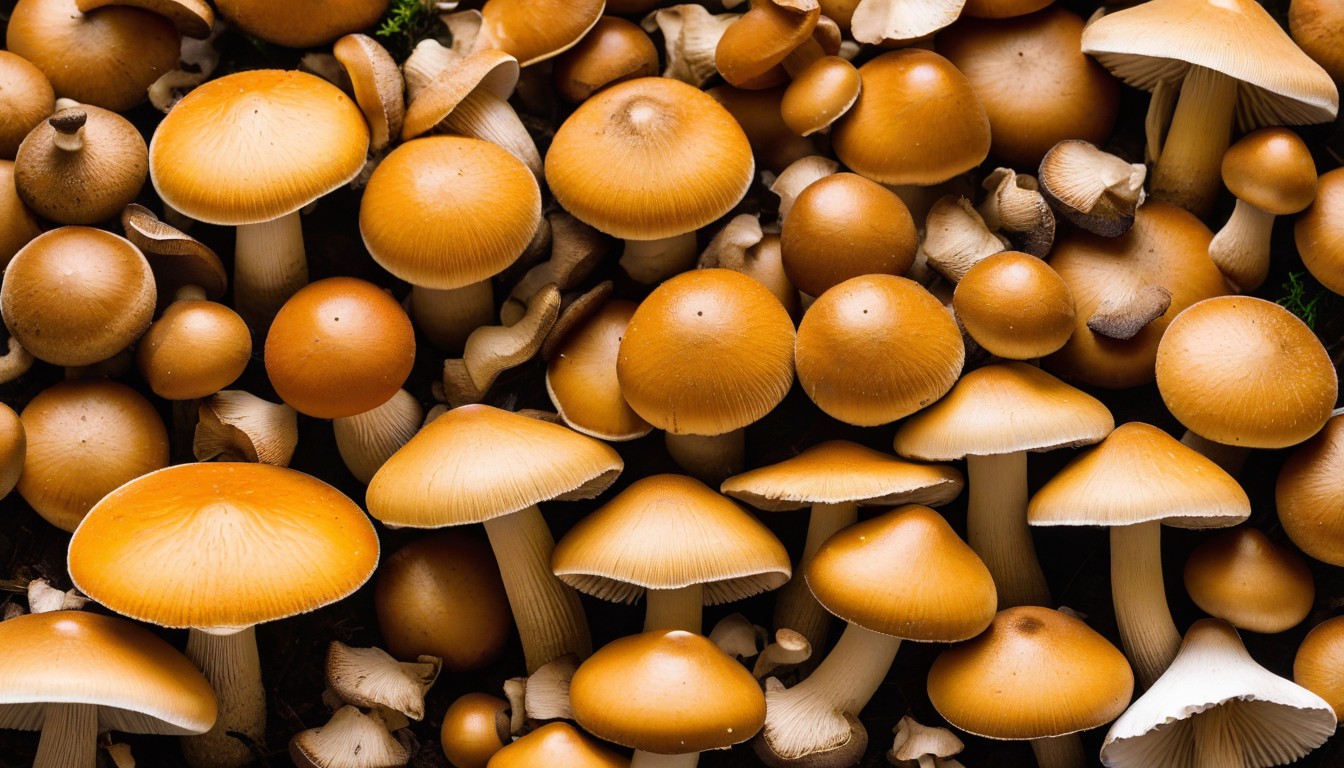
Foragers in Alaska can find a variety of edible mushrooms, each with their unique flavor and texture. Let’s take a look at some of the top varieties:
|
Mushroom |
Taste |
Habitat |
Harvest Season |
|---|---|---|---|
|
Morels |
Earthy, nutty, smoky |
Forests, burned areas |
Spring, early summer |
|
Chanterelles |
Sweet, fruity, musky |
Coniferous and deciduous forests |
Summer, fall |
|
Meaty, seafood-like |
Coniferous forests |
Summer, fall | |
|
Birch boletes |
Rich, buttery |
Birch forests |
Summer, fall |
|
King boletes |
Firm, nutty, meaty |
Coniferous forests |
Summer, fall |
In addition to these top varieties, other edible mushrooms found in Alaska include hedgehogs, shaggy manes, and oyster mushrooms. As with any foraging, it’s important to properly identify mushrooms before consuming them and to harvest sustainably, taking only what you need and leaving plenty behind for future generations of foragers.
Foraging Tips and Techniques in Alaska
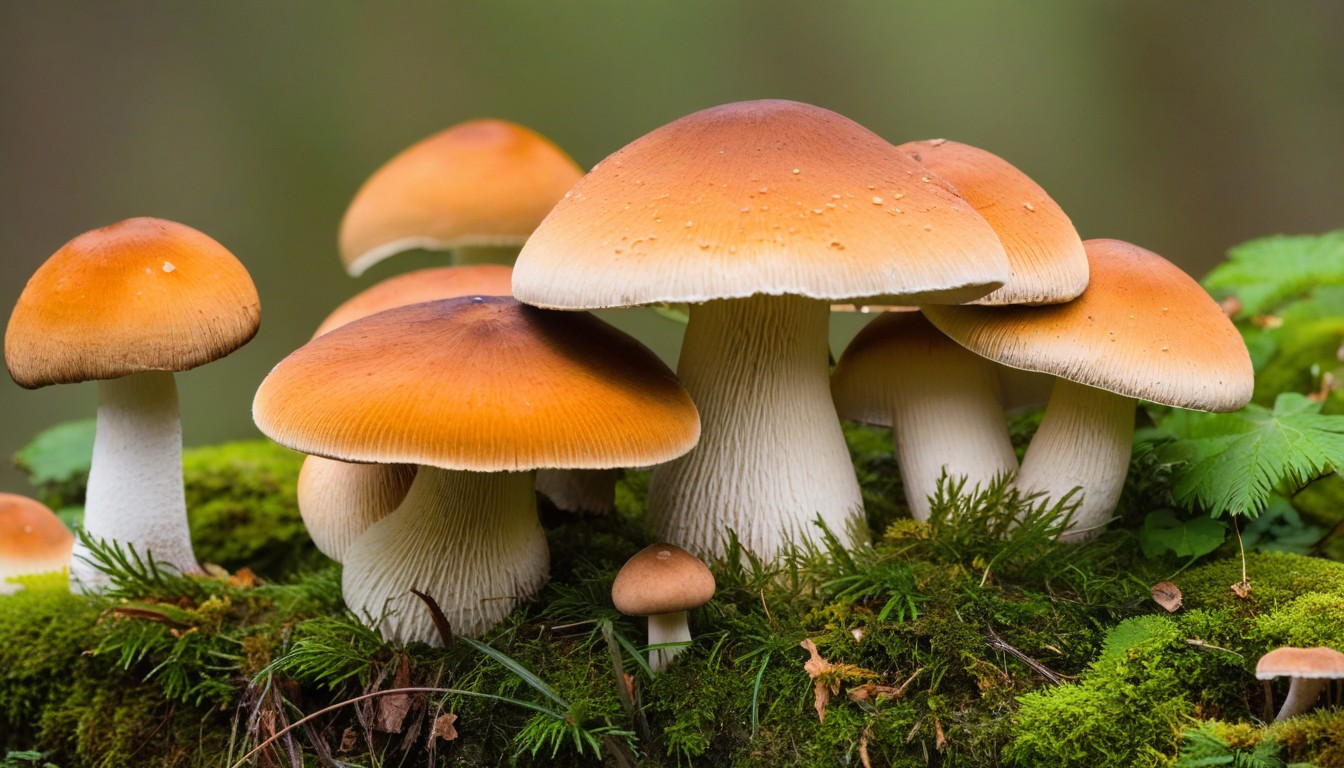
Foraging for mushrooms in Alaska’s wilderness offers a unique and exciting experience. To ensure a successful outing, it’s important to have a solid understanding of the best techniques and tips for gathering edible mushrooms in the wild.
One of the most important tips to keep in mind is to always forage with a knowledgeable guide or experienced forager. This can help to ensure safety and improve the chances of finding the best and most delicious mushrooms in the area.
It’s essential to familiarize yourself with the different types of mushrooms and their habitats. Each variety has its own unique preferences and characteristics, making it crucial to identify the species correctly before adding them to your basket. Bringing a field guide or identification app can be incredibly helpful for novice foragers.
When to Forage
The best time to forage for mushrooms in Alaska is during the late summer and early fall, typically between August and October. During this season, the weather is mild, and the abundance of rainfall creates optimal mushroom-growing conditions.
It’s also important to consider the time of day when foraging. Early morning and late afternoon are usually best, as these times tend to produce the most active mushroom growth.
Where to Forage
The diversity of Alaskan wilderness means that mushrooms can be found in many different environments, including wetlands, forests, and meadows. In search of some of the top edible mushrooms like the Chanterelles and Porcini species, foragers should focus on areas with healthy and diverse trees, particularly birch, aspen, and spruce.
For experienced foragers, exploring unique and rarely touched areas such as alpine regions can expose rare finds. ForageMountains, a locally owned Alaskan company, encourages foragers to be mindful of the impact on the unique region’s ecology while exploring these areas.
Final Thoughts
Foraging for mushrooms in Alaska can be a thrilling and rewarding experience. However, it’s important to keep in mind that safety is key and to follow best practices to ensure a positive and successful outing. Remember to forage with an experienced guide or forager, identify mushrooms correctly, and have fun exploring the diverse and abundant Alaskan wilderness.
Cooking and Preserving Mushrooms from Alaska
Once you’ve foraged a bountiful amount of mushrooms in Alaska, the next step is to learn how to cook and preserve them. Fortunately, there are several techniques specifically tailored to the mushrooms found in this rugged wilderness.
Cooking Techniques
Some of the most popular cooking methods for Alaska’s edible mushrooms include sautéing, roasting, and grilling. For a simple yet delicious preparation, sauté mushrooms in butter or olive oil with garlic and herbs like thyme or rosemary. Roasting mushrooms with a drizzle of balsamic vinegar or soy sauce can also produce an intensely flavorful dish.
For a more unique approach, try grilling meaty mushrooms like portobello or king bolete. Brush them with a mixture of olive oil, soy sauce, and crushed garlic before grilling over medium-high heat until charred and tender.
Preservation Techniques
One of the easiest ways to preserve mushrooms is to dry them. This removes excess water and concentrates their flavor, making them an excellent addition to soups, stews, and sauces. To dry mushrooms, simply spread them out in a single layer on a baking sheet and let them air-dry in a warm, dry space for several days. Alternatively, you can dry them in an oven on its lowest setting for several hours.
If you prefer to preserve mushrooms in a moist environment, pickling is a great option. Simply simmer sliced mushrooms with vinegar, sugar, and salt before storing them in a sterilized jar in the fridge for up to several months.
Recipe Example: Mushroom Risotto
“This creamy and comforting dish is perfect for showcasing the rich flavor of Alaskan mushrooms. Arborio rice is cooked until tender in a broth made from dried porcini mushrooms, before sautéed mushrooms and Parmesan cheese are added for depth and richness.”
|
Ingredients |
Instructions |
|---|---|
|
|
Unique Regional Varieties in Alaska
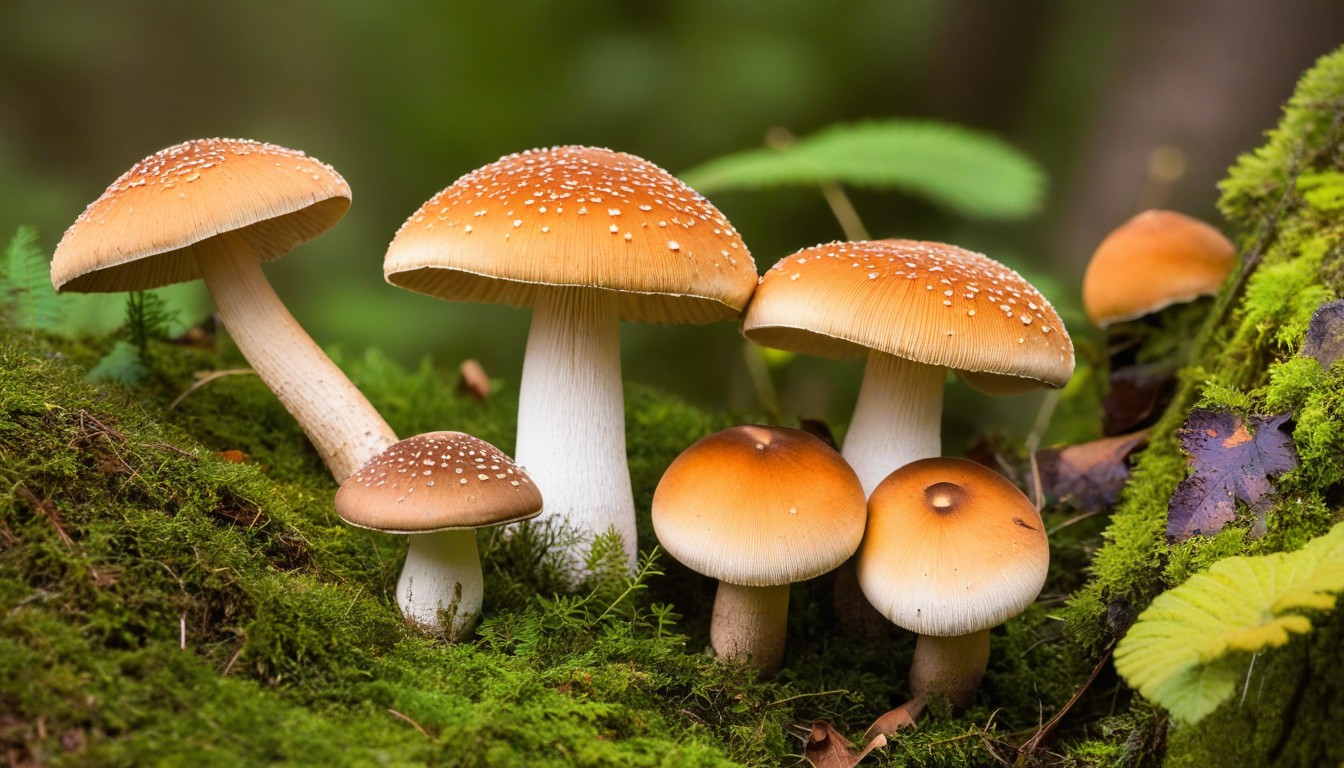
Alaska is home to a diverse range of edible mushrooms, with each region boasting unique varieties that have adapted to their specific environment.
|
Region |
Notable Mushroom Varieties |
|---|---|
|
Southeast Alaska |
Yellow Morels, Lobster Mushrooms, Hedgehogs, Chanterelles |
|
Southcentral Alaska |
King Boletes, Birch Polypores, Hedgehogs, Winter Chanterelles |
|
Interior Alaska |
Morel Mushrooms, Scaly Chanterelles, Porcini Mushrooms, Slippery Jacks |
|
Arctic Alaska |
Chaga, Bear’s Head Mushrooms, Angel Wings, Birch Polypores |
In Southeast Alaska, the damp coastal climate provides ideal conditions for Yellow Morels and Lobster Mushrooms, which thrive amongst the hemlock and spruce trees that blanket the landscape. Meanwhile, the rich soil and diverse plant life of Southcentral Alaska is perfect for King Boletes and Birch Polypores.
In Interior Alaska, the cold winters and short growing season produce unique and highly sought-after mushrooms such as the Morel and Scaly Chanterelle. In the far north, in the harsh tundra of Arctic Alaska, mushrooms are much harder to come by, but Chaga and Bear’s Head Mushrooms grow on the birch trees that manage to survive in the frigid landscape.
Foragers in Alaska can explore each region’s distinct mushroom varieties, discovering new flavors and textures along the way. It is important to note that each variety has its own preferred habitat and growing season, so proper identification and knowledge of the area is essential.
Traditional Indigenous Uses of Mushrooms in Alaska
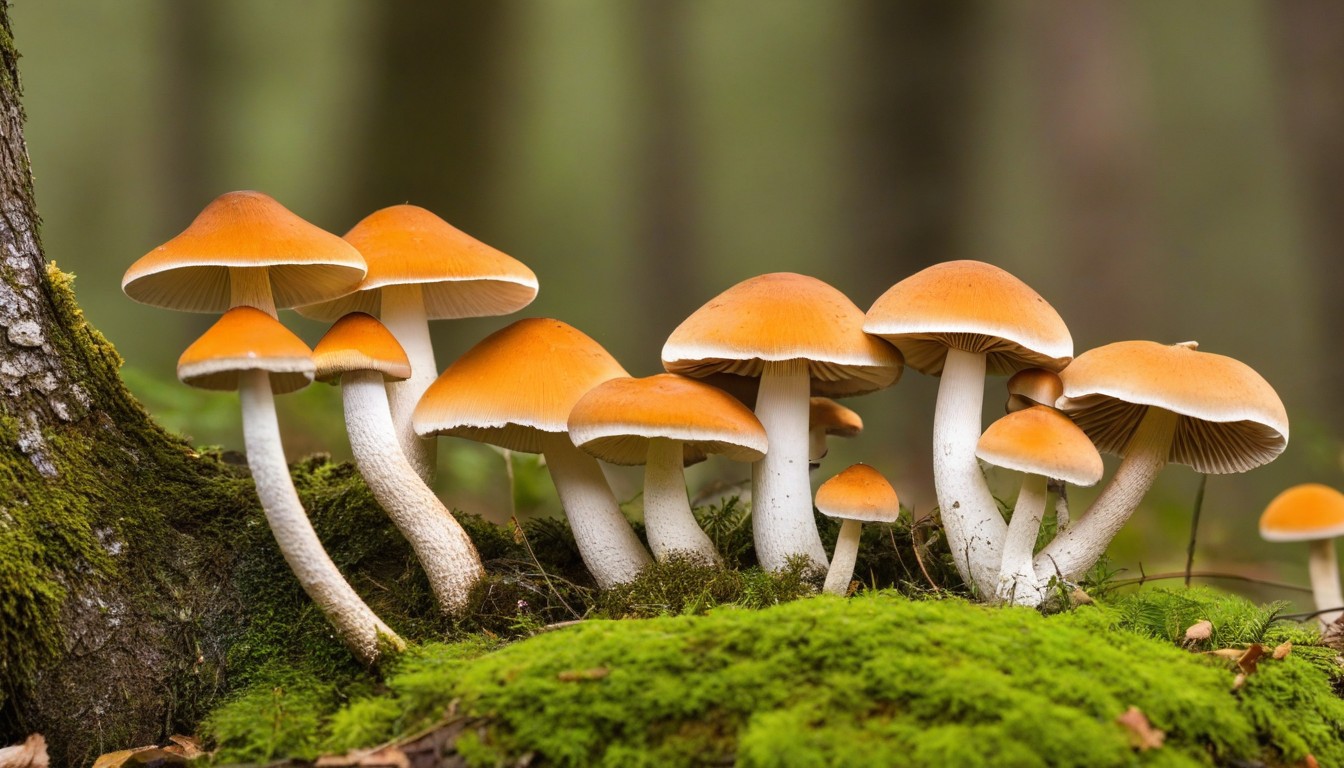
The Indigenous communities in Alaska have a rich history of utilizing mushrooms for various purposes, ranging from culinary to medicinal and spiritual uses. These mushrooms have played an essential role in their culture for centuries.
One of the most commonly used mushrooms in Indigenous communities is the Chaga mushroom. The Chaga mushroom is brewed into a tea that is high in antioxidants, making it a potent immune booster. It is also used as a remedy for various ailments.
The Birch Polypore mushroom is another commonly used fungus in Alaska. This mushroom has a woody texture and is often used as a fire starter due to its flammability. It is also used to aid digestion and as a natural remedy for skin infections.
Other mushrooms commonly used in Indigenous communities include the Morel, which is used in traditional dishes, and the Inky Cap, which is used in spiritual ceremonies due to its hallucinogenic properties.
|
Mushroom |
Indigenous Uses |
|---|---|
|
Chaga |
Tea, remedy for various ailments |
|
Birch Polypore |
Fire starter, aid digestion, natural remedy for skin infections |
|
Morel |
Usage in traditional dishes |
|
Inky Cap |
Usage in spiritual ceremonies |
The Indigenous communities in Alaska have a deep respect for the environment and practice sustainable foraging techniques, preserving the delicate balance of the ecosystem.
“Mushrooms are more than just a food source for us. They are part of our culture, our heritage, and our way of life. Each mushroom tells a story, and we honor that story by using them respectfully and sustainably.” -Unnamed member of an Indigenous community in Alaska
As foragers, we can learn from their respectful relationship with the natural world and follow in their footsteps, ensuring the longevity of these valuable resources.
Sustainable Foraging Practices in Alaska
Foraging for edible mushrooms in Alaska is a rewarding experience, but it is important to practice sustainable foraging techniques to protect the delicate ecosystem. Here are some tips for responsible foraging:
- Only harvest mushrooms that you can positively identify as edible.
- Do not disturb the habitat – avoid trampling on plants, disturbing the soil, or damaging the mycelium network.
- Do not over-harvest. Leave some mushrooms behind to ensure their population can replenish.
- Respect private property and obtain permission from landowners before foraging.
- Avoid foraging in areas with high levels of pollution or contamination.
By practicing responsible foraging techniques, you can help to preserve the magnificent wilderness area of Alaska for future generations to enjoy.
Conclusion
Alaska’s wilderness is a treasure trove of edible mushrooms, offering foragers a rich and diverse array of tasty and nutritious varieties. From the Meaty Morel to the versatile Chanterelle, there is no shortage of delicious fungi to discover and enjoy. However, it is important to always exercise caution and follow safety protocols when foraging, including correctly identifying mushrooms before consuming them.
By adhering to sustainable foraging practices, we can help protect the delicate balance of the ecosystem, preserving these invaluable resources for generations to come. Whether you are a seasoned forager or a curious novice, exploring Alaska’s mushroom diversity is an adventure not to be missed. So get out there, explore the wilderness, and experience the magic of edible mushrooms in Alaska!
Thank you for taking the time to read our forager’s guide to edible mushrooms in Alaska. We hope that you found the information informative and useful in your foraging journeys. Happy hunting!
FAQ
Are all mushrooms in Alaska edible?
No, not all mushrooms in Alaska are edible. It is important to have proper knowledge of mushroom identification and consult experts or field guides to ensure you are foraging for edible varieties.
What are some common safety precautions for mushroom foraging in Alaska?
When foraging for mushrooms in Alaska, it is essential to wear appropriate gear, carry a reliable field guide, avoid consuming unfamiliar varieties, and always double-check the identification of any mushroom before consuming.
What are the top edible mushrooms in Alaska?
Some of the top edible mushrooms found in Alaska include morel mushrooms, king bolete mushrooms, chanterelle mushrooms, hedgehog mushrooms, and lobster mushrooms. Each of these varieties has its own unique taste and preferred habitat.
What are some useful foraging tips for mushroom hunting in Alaska?
When foraging for mushrooms in Alaska, it is recommended to start early in the morning, explore different habitats such as forests and meadows, pay attention to weather conditions, and learn to recognize the preferred environments and growth patterns of different mushroom species.
How can I cook and preserve the mushrooms I forage in Alaska?
There are various ways to cook and preserve mushrooms from Alaska, including sautéing, grilling, drying, and pickling. Cooking methods can enhance the flavors and textures of the mushrooms, while preserving techniques such as drying or pickling can extend their shelf life.
What are some unique regional mushroom varieties in different parts of Alaska?
Alaska is known for its diverse regional mushroom varieties. Some examples include the golden chanterelles found in the Southeast region, the birch boletes found in the Interior region, and the golden and silver coral mushrooms found in the Southcentral region.
What are some traditional indigenous uses of mushrooms in Alaska?
Indigenous communities in Alaska have a rich history of using mushrooms for various purposes. Some traditional uses include medicinal applications, dye-making, spiritual ceremonies, and as a source of sustenance.
How can I practice sustainable mushroom foraging in Alaska?
Sustainable mushroom foraging in Alaska involves respectful harvesting practices, such as not over-collecting or damaging habitats, leaving some mushrooms behind to ensure their regrowth, and respecting private property and protected areas.
Why is it important to practice responsible mushroom foraging in Alaska?
Responsible mushroom foraging in Alaska ensures the preservation of the ecosystem and its delicate balance. By following ethical guidelines and respecting the environment, we can continue to enjoy the benefits of mushroom foraging for generations to come.

